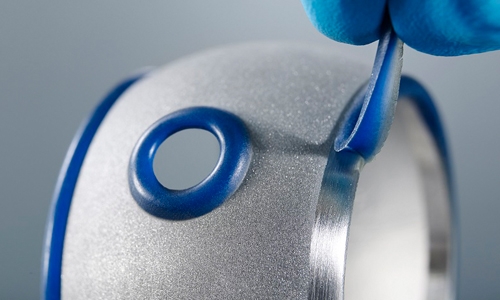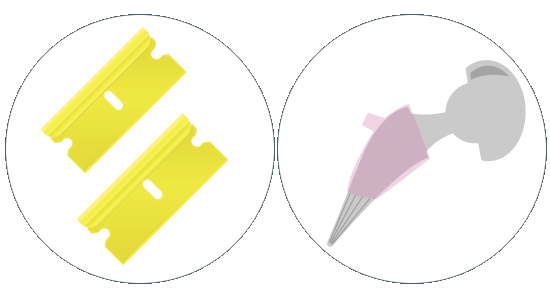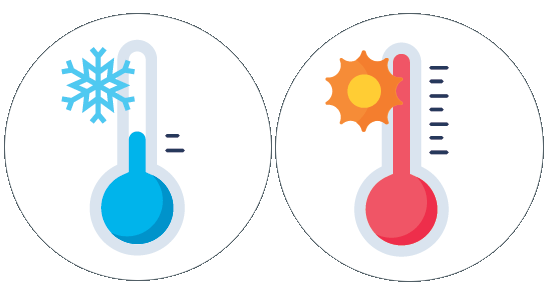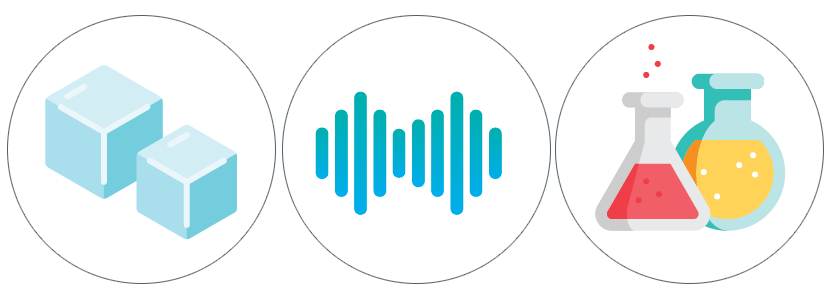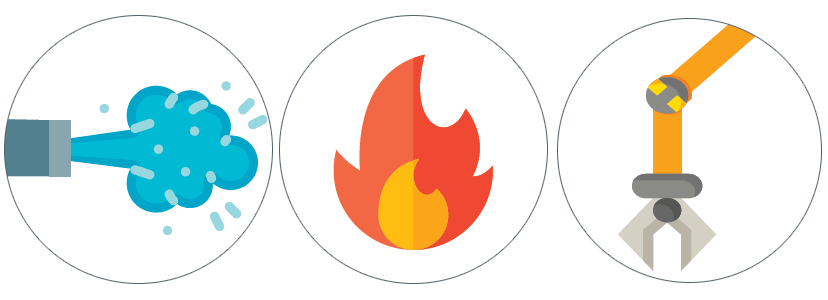10 verschiedene Möglichkeiten zum Entfernen von SpeedMask® Maskierungsmittel
Für Hersteller, die nach Materialien suchen, um nichtporöse Oberflächen während aggressiver Endbearbeitungsprozesse zu schützen, können die temporären lichthärtenden SpeedMask® Maskierungsmittel von Dymax die Lösung sein. Die Produkte lassen sich einfach in einer Schicht auftragen und härten in Sekunden aus. Sie ersetzen traditionelle arbeitsintensive Auftragungsmethoden wie Wachs, Lack und Klebeband und tragen so zur Kostensenkung und Durchsatzsteigerung bei. Die Maskierungsmittel lassen sich nach der korrekten Verarbeitung der Teile leicht entfernen und hinterlassen rückstandsfreie Oberflächen. Das Verständnis der verschiedenen verfügbaren Techniken ist jedoch für einen erfolgreichen Vorgang entscheidend, wenn es darum geht, die beste Entfernungsmethode zu wählen.
Die Variablen verstehen
Die Auswahl des optimalen Verfahrens hängt von mehreren wichtigen Faktoren ab:
- Maskiermittel : Verschiedene SpeedMask-Formulierungen besitzen unterschiedliche Eigenschaften, die ihr Entfernungsverhalten beeinflussen.
- Untergrund und Oberflächenbeschaffenheit: Das darunterliegende Material und die Oberflächenstruktur können die Haftfestigkeit und die Komplexität der Entfernung beeinflussen.
- Maskiermittel : Dickere Schichten erfordern möglicherweise einen anderen Ansatz als dünne Schichten.
- Teilegeometrie: Komplexe Formen können spezielle Techniken erfordern, um eine vollständige Entfernung zu gewährleisten.
- Expositionsbeschränkungen: Temperatur-, Chemikalien- und Wasserverträglichkeit des Teils und der Umgebung müssen berücksichtigt werden.
Unter Berücksichtigung dieser Variablen sind hier einige allgemeine Methoden zum Entfernen von SpeedMask- Maskierungsmittel.
Manuelle Methoden
Manuelles Schälen per Hand/mit Werkzeug: Die Verwendung von Kunststoffrasierern zum manuellen Anheben der Maske bietet direkte Kontrolle für ein gezieltes Entfernen, insbesondere auf flachen Oberflächen.
Tab: Aus Maskiermittel oder einem anderen flexiblen Kunststoff wird eine Lasche hergestellt, mit der das Abziehen des Maskiermittel eingeleitet wird. Dies ist insbesondere bei komplizierten Geometrien oder großen Flächen von Vorteil.
Temperaturbasierte Methoden
Versprödung durch Kälte: Einige Maskierungsmittel können durch Kälte spröde gemacht werden, sodass sie sich leichter entfernen lassen. Die Versprödung kann erreicht werden, indem man das Teil in flüssigen Stickstoff taucht, es in Trockeneis einwickelt oder seine Temperatur in einem Tiefkühlschrank auf unter -60 °C (-76 °F) bringt.
Wärmeunterstützt: Erhitzen Sie das Maskiermittel , um es aufzuweichen. Die Verwendung einer Heißluftpistole ist ein lokalerer Ansatz als das Erhitzen eines ganzen Teils in einem Ofen oder auf einer Kochplatte.
Halbautomatische Methoden
Trockeneisstrahlen: Trockeneis wird in einem Druckluftstrom beschleunigt und auf die maskierte Oberfläche gerichtet. Der Strahl verursacht einen thermischen Schock auf der Oberfläche, der Scherspannungen in den Mikroschichten des Maskiermittel verursacht.
Ultraschall: Bei diesem Verfahren wird Ultraschall verwendet, um eine Flüssigkeit zu bewegen. Manchmal wird auch Wasser verwendet. Je nach Reinigungsziel wird häufig ein Lösungsmittel oder ein Zusatzstoff hinzugefügt. Diese Technik eignet sich gut für Teile mit komplexen Geometrien.
Chemisch: Der Kontakt mit aggressiven Lösungsmitteln/Chemikalien kann die Bindungsstärke von SpeedMask Maskierungsmittel schwächen. Da die meisten Maskierungsmittel von Dymax chemikalienbeständig sind, löst sich das Maskiermittel beim Einweichen in Chemikalien normalerweise nicht zu 100 % auf. Um das Maskiermittel vollständig zu entfernen, kann eine mechanische Entfernung, ein Abheben oder ein Waschen nach dem Einweichen erforderlich sein.
Automatisierte Methoden
Wasserstrahl: Verwenden Sie Hochdruckwasser, um das Maskiermittel für eine maßgeschneiderte Reinigung zu entfernen. Durchmesser und Form (Kegel oder Strahl) der Wasserstrahldüse sowie der Druck können angepasst werden, um sie besser an die Anwendung anzupassen.
Verbrennung/Abbrennen im Ofen: SpeedMask Maskierungsmittel , die zu 100 % organisch sind, verbrennen vollständig und werden bei entsprechender Temperatur/Zykluszeit zu Asche. Die verbleibende Asche kann mit Druckluft leicht von der Oberfläche geblasen werden.
Automatisierte Greifer: Bei dieser Methode werden pneumatische Klemmen auf einem XYZ-Tisch verwendet, um den maskierten Bereich präzise zu greifen und das Maskiermittel in Z- oder X/Y-Richtung zu ziehen, um es abzuziehen. Diese Methode eignet sich für Maskierungsmittel mit geringerer Haftung sowie für Anwendungen mit hohem Volumen oder komplizierte Anwendungen.
Die Wahl der geeigneten Entfernungsmethode für SpeedMask Maskierungsmittel erfordert ein umfassendes Verständnis der spezifischen Anforderungen der Anwendung. Indem Sie die Einflussfaktoren sorgfältig berücksichtigen und die oben beschriebenen verschiedenen Techniken ausprobieren, können Sie eine effiziente, rückstandsfreie Entfernung sicherstellen, Ihre empfindlichen Oberflächen schützen und optimale Projektergebnisse erzielen. Denken Sie daran, dass die Beratung durch technische Experten von Dymax wertvolle Hinweise bei der Auswahl der für Ihre Anforderungen am besten geeigneten Entfernungsmethode liefern kann.

